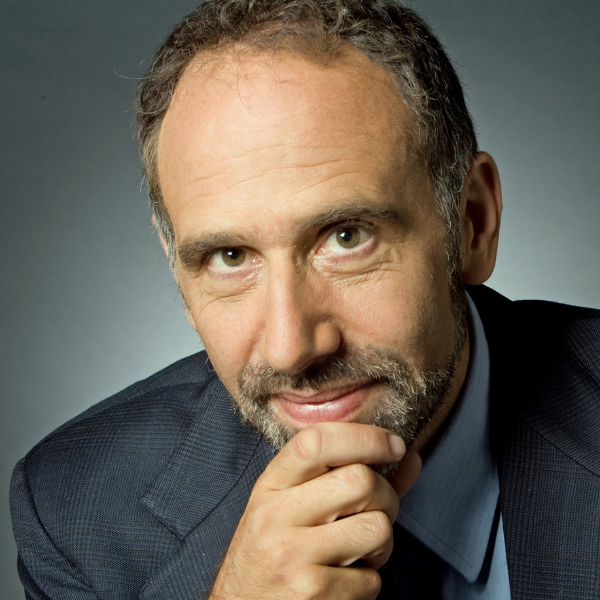New Study Finds Top Executives Pocketed a Huge Chunk of the Trump-Radical Republican Tax Cuts
A new study shows that the top five executives of major corporations pocketed 15 to 19 cents of every dollar their companies gained from two recent tax cuts. The paper, by Eric Ohrn at Grinnell College, should be a really big deal.
The basic point is CEOs and other top executives rip off their companies. The officers are not worth the $20 million or more that many of them pocket each year.
Again, this is not a moral judgment about their value to society. It is a simple dollars-and-cents calculation about how much money they produce for shareholders. The piece suggests that it is nothing close to what they pocket.
This is a big deal because it is yet another piece of evidence that executives are able to pocket money that they did nothing to earn.
It is no more desirable to pay a CEO $20 million if someone just as effective can be hired for $2 million than to pay an extra $18 million for rent.
In the case of these tax cuts, company profits increased because of a change in government policy, not because their management had developed new products, increased market share or reduced production costs. Some of them presumably paid for lobbyists to push for the tax breaks, so their contribution to higher profits may not have been exactly nothing.
There is much other work along similar lines. An analysis of the pay of oil company CEOs found that they got large increases in compensation when oil prices rose. Since the CEOs were not responsible for the rise in world oil prices, this meant they were getting compensated for factors that had little to do with their work. A more recent study found the same result.
Another study found that CEO pay soared in the 1990s because it seemed that corporate boards did not understand the value of the options they were issuing.
A few years ago, Jessica Schieder and I wrote a paper showing that the loss of the tax deduction for CEO pay in the health insurance industry, which was part of the Affordable Care Act, had no impact on CEO pay.
The loss of this deduction effectively raised the cost of CEO pay to firms by more than 50%. If CEO pay were closely related to the value they added to the company’s bottom line, we should have unambiguously expected to see some decline in CEO pay in the industry relative to other sectors. In a wide variety of specifications, we found no negative effect. Bebchuk and Fried’s book, Pay Without Performance, presents a wide range of evidence on this issue.
Ripping Off Companies
As can be easily shown the bulk of the upward redistribution from the 1970s was not due to a shift from wages to profits, it was due to an upward redistribution among wage earners. Instead of money going to ordinary workers, it was going to those at the top end of the wage distribution, such as doctors and dentists, STEM [science, technology, engineering and math] workers, and especially to Wall Street trader types and top corporate management. If we want to reverse this upward redistribution then we have to take back the money from those who got it.
If top management actually earned their pay in the sense of increasing profits for the companies they led, then there would be at least some sort of trade-off. Reducing their pay would mean a corresponding loss in profit for these companies. It still might be desirable to see top executives pocket less money, but shareholders would be unhappy in this story since they will have fewer profits.
But if CEOs and other top management are not increasing profits in a way that is commensurate with their pay, their excess pay is a direct drain on the companies that employ them.
Money Thrown in Garbage
From the standpoint of the shareholders, it is no more desirable to pay a CEO $20 million if someone just as effective can be hired for $2 million than to pay an extra $18 million for rent, utilities or any other input. It is money thrown in the garbage.
As I have argued in the past, the excess pay for CEOs is not just an issue because of a relatively small number of very highly paid top executives. It matters because of its impact on pay structures throughout the economy. When the CEO gets paid more, it means more money for those next to the CEO in the corporate hierarchy and even the third-tier corporate executives. That leaves less money for everyone else.

The Ohrn study found that 15% to 19% of the benefits of the tax breaks he examined went to the top five executives. If half this amount went to the next 20 or 30 people in the corporate hierarchy, it would imply that between 22% and 37% of the money gained from a tax break went to 25 of the highest paid people in the corporate hierarchy.
If the CEO is getting $20 million, then the rest of the top five executives are likely making close to $10 million; the next echelon making $1 to $2 million.
If we envision pay structures comparable to what we had in the 1960s and 1970s, CEOs would be getting $2 to $3 million. The next four executives likely would earn $1 to $2 million. The third tier would be paid in the high six figures. With the pay structures from the corporate sector carrying over to other sectors, such as government, universities and non-profits, we would be looking at a very different economy.
Arranging Their Own Pay
If CEOs really don’t earn their pay, the obvious question is how do they get away with it? The answer is they largely control the boards of directors that determine their pay.
Top management typically plays a large role in getting people appointed to the board. Once there, the best way to remain on the board is to avoid pissing off your colleagues. More than 99% of the directors nominated for re-election by the board win their elections.
Being a corporate director is great work if you can get it.
As Steven Clifford documents in his book, the CEO Pay Machine, which is largely based on his experience at several corporate boards, being a director can pay several hundred thousand dollars a year for 200 to 400 hours of work. Directors typically want to keep their jobs, and the best way to do this is by avoiding asking pesky questions like, “Can we get a CEO who is just as good for half the money?”
While many people seem to recognize that CEOs rip off their companies, they fail to see the obvious implication that shareholders have a direct interest in lowering CEO pay.
For example, a common complaint about share buybacks is that they allow top management to manipulate stock prices to increase the value of their options. (Editor’s note: Before 1982, buybacks were illegal, deemed a form of manipulation.)
If this is true, then shareholders should want buybacks to be more tightly restricted, since they are allowing top management to steal from the company. If shareholders actually wanted CEOs to get more money from their options, they would simply give them more options, not allow them to manipulate share prices. Yet, somehow buybacks in their current form are still seen as serving shareholders.
Shareholders Losing Out
As a practical matter, it is easy to show that the last two decades have not been a period of especially high returns for shareholders. This is in spite of the large cut in corporate taxes under the Trump administration.
There seems to be confusion on this point because there has been a large run-up in stock prices over this period. Much of this story is that shareholders are increasingly getting their returns in the form of higher share prices rather than dividends.
Before 1980, dividends were typically 3% to 4% of the share price, providing close to half of the return to shareholders. In recent years, dividend yields have dropped to not much over 1%, with the rest of the return coming from a rise in share prices. If we only look at the share price, the story looks very good for shareholders, but if we look at the total return, the opposite is the case.
If CEOs really are ripping off the companies they lead, then shareholders should be allies in the effort to contain CEO pay. This would mean that giving shareholders more ability to control corporate boards would result in lower CEO pay.
As with much past work, Ohrn’s study found that better corporate governance reduced the portion of the tax breaks the CEO and other top executives were able to pocket.
Reform Proposal
There are many ways to increase the ability of shareholders to contain CEO pay, but my favorite is to build on the “Say on Pay,” provision of the Dodd-Frank financial reform law. This provision required companies to submit their CEO compensation package to an up or down vote of the shareholders every three years. The vote is nonbinding, but it allows for direct input from shareholders. As it is, most pay packages are approved with less than 3% being voted down.
I would take the Say on Pay provision a step further by imposing a serious penalty on corporate boards when a pay package gets voted down. My penalty would be that they lose their own pay if the shareholders vote down the CEO pay package.
While a small share of pay packages get voted down, my guess is that if just one or two corporate boards lost their pay through this route, it would radically transform the way boards view CEO pay. They suddenly would take very seriously the question of whether they could get away with paying their CEO less money.
I also like this approach because it is no more socialistic than the current system of corporate governance. It would be hard to make an argument that giving shareholders more control over CEO pay is a step toward communism.
The basic point here is a simple one: The rules of corporate governance are unavoidably set by the government. There is no single way to structure these rules. As we have now structured them, they make it easy for CEOs to rip off their companies. We can make rules that make it harder for CEOs to take advantage of their employers and easier for shareholders to contain pay.
Progressives should strongly favor mechanisms that contain CEO pay because of the impact that high CEO pay has on wage inequality more generally. And, shareholders should be allies in this effort. There is no reason for us to feel sorry for shareholders, who are the richest people in the country. They can help us contain CEO pay and we should welcome their assistance.
Featured Image: Courtesy Jeff Danziger




